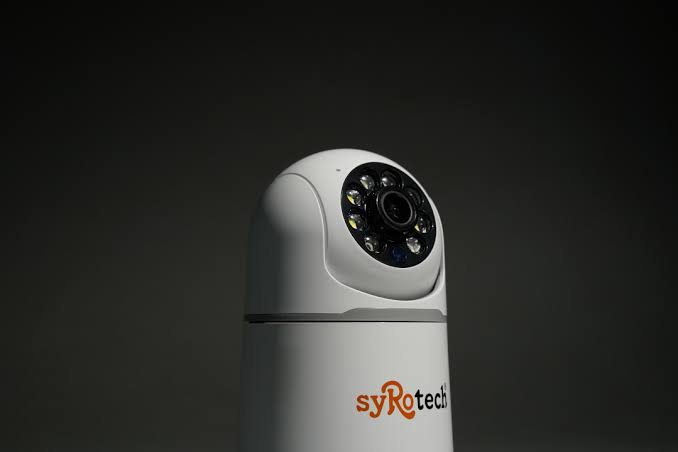Wireless camera solutions are fundamentally revolutionising property surveillance, as practised in Australia. The ability to incorporate the use of modern technology into simplicity makes it an exciting proposition for homeowners and business people. This blog will explore how these wireless camera solutions are reshaping the security landscape in Melbourne.
1.Ease of Installation and Flexibility
Wireless camera systems are another easy installation procedure that makes them popular. Wireless cameras can be installed easily and more quickly than wired systems, which can only be installed with particular building restructuring. This not only makes them less invasive but also reduces the installation costs.
The flexibility of repositioning cameras without worrying about cables is a significant advantage, particularly for growing businesses or evolving residential layouts.
2.Remote Monitoring and Accessibility
One of the main ways property management has been eased over the years is through remote monitoring. Property owners can monitor live videos on the go anytime and anywhere in the world; however, they have to use an internet connection through their smartphones, tablets, or even computers to view real-time videos.
This feature is handy for people who own several houses or apartments or may often be away from the region, state or country on business, holidays, or other matters.
3.Advanced Technology Integration
Wireless camera systems come with several features that increase the efficiency of their operation. There are advanced features such as the ones where the cameras are only active when motion is sensed, avoiding overusing the storage space and being oriented towards breaches.
Under lighting conditions, night vision capability to ensure the surroundings are closely observed is provided. Combined with other smart home technologies, including lighting and alarm systems, make a robust security network.
4.Scalability
The modular design of wireless camera systems provides exceptional scalability, allowing users to expand their security setup as needed quickly. Additional cameras can be seamlessly integrated into the existing system without causing disruptions, making these systems ideal for small residences and expansive commercial spaces.
As security demands evolve and increase, the system can effortlessly grow to cover new areas, ensuring comprehensive surveillance with minimal hassle. This flexibility makes wireless solutions a practical investment for any security needs, both now and in the future.
5.Cost-Effectiveness
Compared to wired systems, installing wireless camera systems requires a lot more investment initially, but these cameras are likely cheaper to maintain in the long run. These systems are relatively easy to use, and thus, the installation of such systems does not necessarily have to be done by a professional.
More importantly, the systems will not need frequent repairs in the future. In addition, the absence of wires also solves a problem that could prove costly in the form of broken connections.
Considering the cost over the long run and convenience, wireless systems would always be a good choice for residents or commercial users.
6.Enhanced Security
Wireless camera systems often utilise encrypted connections to transmit data securely, significantly minimising the risk of hacking and unauthorised access. Additionally, the absence of physical wires eliminates the potential for tampering or cutting connections, which could compromise security measures.
This inherent design makes wireless cameras appealing to high-security facilities requiring reliable surveillance solutions without vulnerabilities.
By ensuring robust protection against external threats, these systems provide peace of mind for businesses and organisations, prioritising safety and security.
7.Environmental Adaptability
The wireless cameras are designed to enable them to withstand harsh environmental factors; they can, therefore, be used indoors and outside. Weather-resistant models also come in handy due to routinely changing climatic conditions in Australia, specifically the rain, the wind and extreme temperatures.
This stability and durability empower these cameras to run uninterruptedly, thus ensuring users of consistent surveillance and security that meet their administrative or safety measures in diverse environments.
8.Data Management and Storage
Modern wireless camera systems come with options for both local and cloud-based storage. Users can store data on onsite physical devices or upload footage to the cloud, which can be securely accessed and stored for long periods.
Cloud storage offers the benefit of scalability and remote accessibility, making it more straightforward to manage large volumes of records without investing in physical storage solutions.
9.AI and Machine Learning Enhancements
Integrating artificial intelligence and machine learning algorithms has significantly enhanced the capabilities of wireless camera systems.
These technologies enable cameras to distinguish between routine movements and potential threats, reducing false alarms and focusing security attention where needed.
Over time, these systems learn from the observed environment, enhancing their predictive capabilities and overall security effectiveness.
10.Energy Efficiency
Wireless camera systems typically offer greater energy efficiency compared to their wired counterparts. These systems can operate on batteries or switch to low-power modes when inactive, significantly reducing overall energy consumption.
This lowers operating costs for users and contributes to environmental sustainability by minimising the carbon footprint associated with constant power usage.
11.Legal Compliance and Privacy
In Australia, surveillance systems can only be installed with any accompaniment from the privacy laws, though these laws differ from state to state.
Some legal requirements in wireless systems have been implemented, although the users are provided privacy masks and protection features.
These ensure surveillance does not intrude on an individual’s rights or privacy, maintaining legal compliance while securing properties.
12.Consumer Trends and Market Growth
Wireless camera solutions have become quite popular across Australia due to the need to combine security and convenience with modularity. Intelligent security systems are becoming increasingly popular with consumers, especially where safety and control simplicity are essential.
Across both the residential and commercial premises categories, the demand for integrated, intelligent solutions is rising.
This shift shows Australians moving from a traditional security model to a more flexible modern approach to security to enhance the maximum security demand.
In a Nutshell
Wireless camera solutions have recently gained enormous popularity in Australia, revolutionising property security by providing advantages that match modern requirements and advancements.
In the future, these systems should be an inherent part of security planning and implementation, offering reliable, easily managed and user-friendly security systems that deliver reliable protection of valuable properties and assets.
Keep an eye for more news & updates on EssentialTribune!








